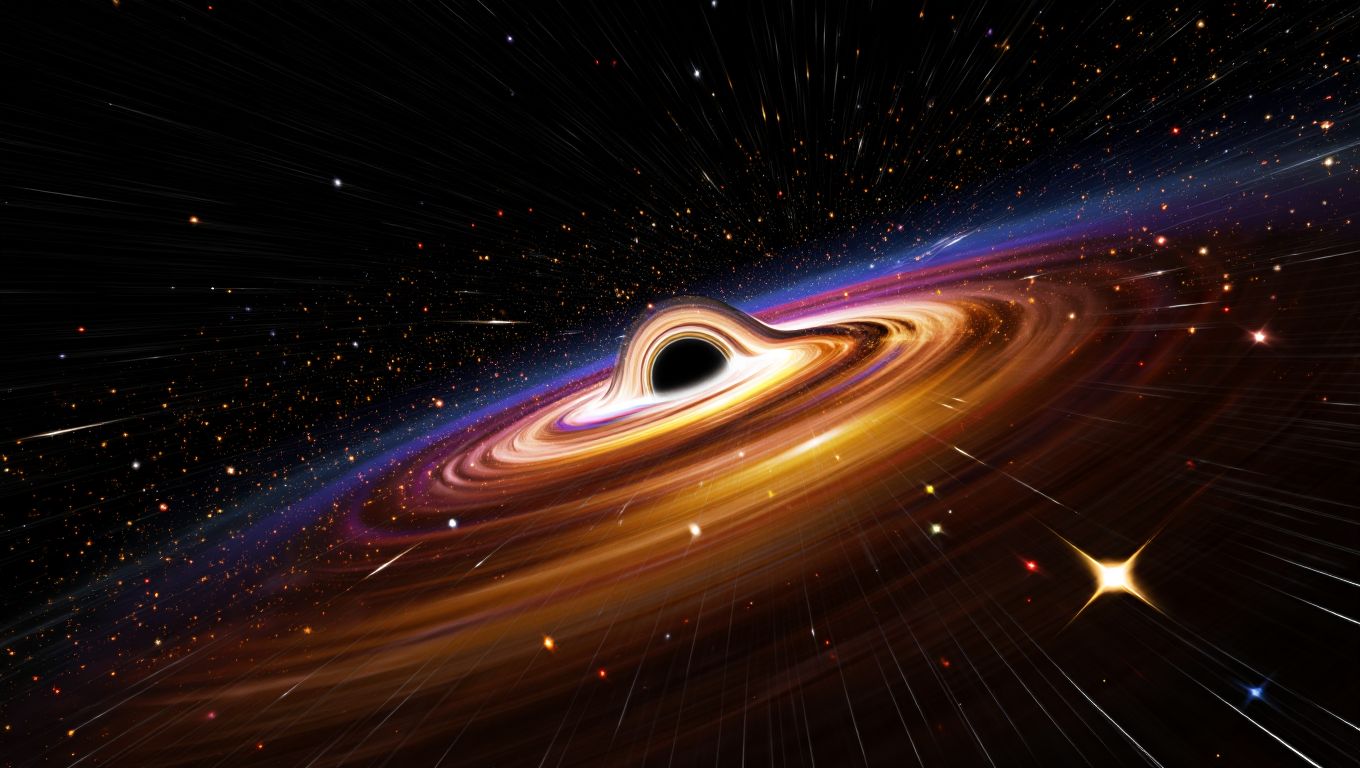⚫ Dizzying: this black hole was propelled at 180,000 km/h (112,000 mph)
Follow us on Google News (click on ☆)
When two black holes of very different sizes collide, they generate gravitational waves—ripples in spacetime predicted by Albert Einstein. The mass difference between the two objects creates an imbalance that propels the final black hole at high speed: this is what astrophysicists call a "natal kick."

This discovery was made possible by analyzing the GW190412 signal, detected in 2019.
By studying, through gravitational waves, the characteristics of the two initial black holes—their mass and spin—they were able to determine the direction and recoil speed of the final black hole.
The result is staggering: the black hole was ejected at over 50 km/s (about 180,000 km/h or 112,000 mph). At that speed, it could travel the distance between Paris and Tokyo (9,700 km or 6,000 miles) in three minutes. Such movement is enough to eject the black hole from its original star cluster. This prevents it from merging again with others, thereby limiting the formation of supermassive black holes.
Understanding these mechanisms is essential for tracing the evolution of large cosmic structures and the growth of black holes over time.
This breakthrough also paves the way for future observations combining gravitational waves and visible light, offering a new perspective on the most violent phenomena in the Universe. As one of the study's co-authors emphasized, these results demonstrate the power of gravitational waves as a tool for exploring the invisible.

Animation of the merger of two black holes
Credit: SXS
Gravitational Waves
Gravitational waves are distortions in spacetime produced by extremely energetic astrophysical events, such as the merger of black holes or neutron stars. Predicted by Albert Einstein in 1916, they were first observed in 2015 by the LIGO interferometer.
These waves travel at the speed of light and allow the detection of phenomena invisible to conventional telescopes. Detectors, highly precise instruments, measure tiny variations in distance, on the order of a fraction of the size of an atom.
Analyzing these signals provides valuable information about the mass, spin, and distance of the objects involved, revolutionizing our understanding of the Universe.
Black Holes and Their Formation
A black hole is a region of space where gravity is so intense that nothing, not even light, can escape. They are typically born from the collapse of massive stars at the end of their lives, but can also result from the merger of several smaller black holes.
When they merge, these objects release colossal energy in the form of gravitational waves. The mass and size of the black holes then determine the intensity of the event and the properties of the resulting black hole.
"Natal kicks," like the one observed in the GW190412 event, play a major role: by ejecting some black holes from their stellar environment, they prevent multiple successive mergers. This limits the growth of these objects into supermassive black holes that reside at the centers of galaxies.